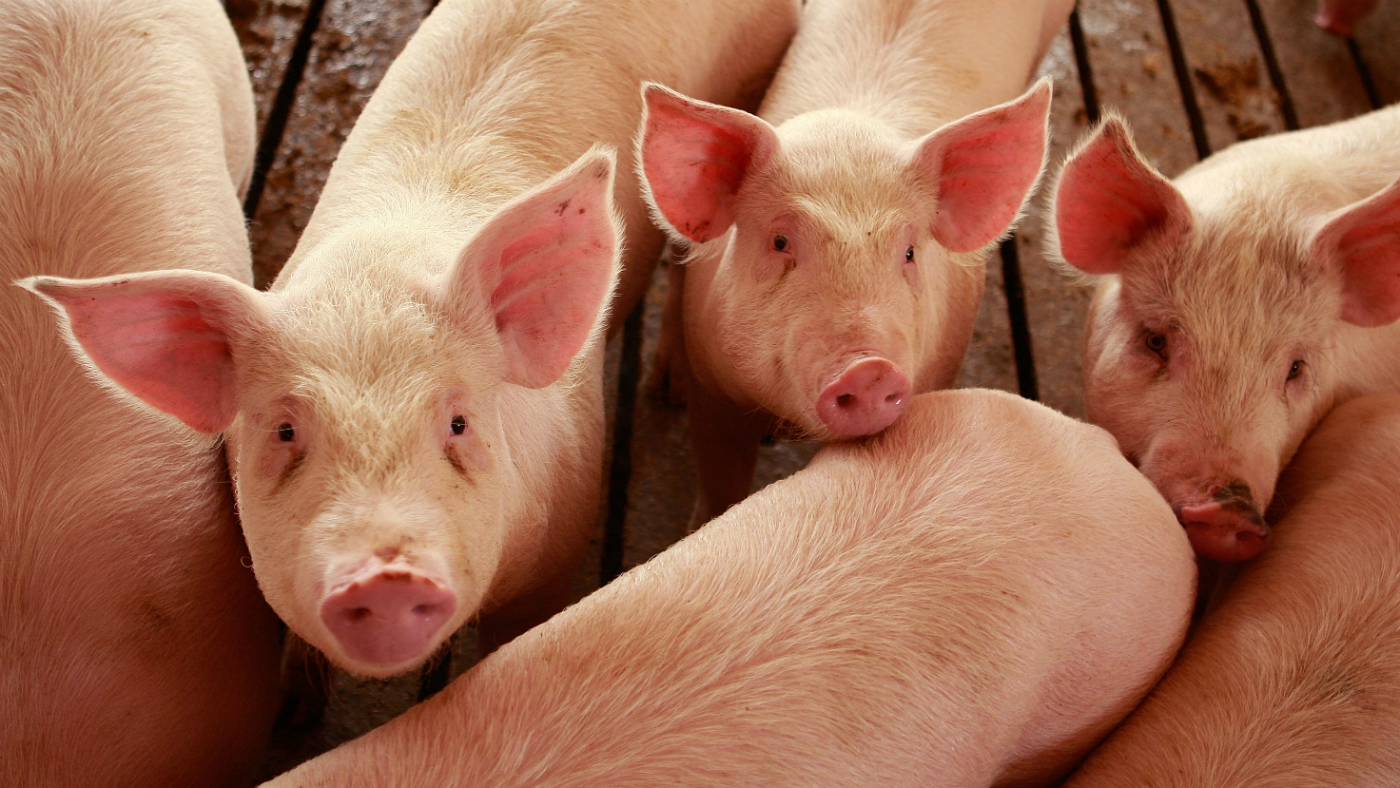Pig virus poses potentially lethal threat to humans, scientists warn
Study shows newly discovered Sars-like disease can jump between cells of different species

A recently identified lethal virus that occurs mainly in pigs may also pose a threat to humans, new research has suggested.
Laboratory tests at Ohio State University show that the disease, known as porcine deltacoronavirus, “readily jumps between the cells of different species including humans”, The Daily Telegraph reports.
The virus was first identified in pigs in China six years. It was then found to be the cause of a diarrhoea outbreak among pigs in Ohio in 2014, followed by reports of more cases in other countries. “Young infected pigs experience acute diarrhoea and vomiting and may die,” according to BT News.
The Week
Escape your echo chamber. Get the facts behind the news, plus analysis from multiple perspectives.

Sign up for The Week's Free Newsletters
From our morning news briefing to a weekly Good News Newsletter, get the best of The Week delivered directly to your inbox.
From our morning news briefing to a weekly Good News Newsletter, get the best of The Week delivered directly to your inbox.
The pathogen shows similarities to Mers (Middle East respiratory syndrome) and Sars (severe acute respiratory syndrome), which have killed a total of at least 1,000 people worldwide since being discovered in 2012 and 2002 respectively.
“We’re very concerned about emerging coronaviruses and worry about the harm they can do to animals and their potential to jump to humans,” said Professor Linda Saif, a co-author of the research report, published yesterday in the journal Proceedings of the National Academy of Sciences.
The study found that the virus has the ability to target a specific receptor molecule on the surface of cells within the digestive tract, and can bind to this receptor in chickens, cats and humans.
Lead researcher Dr Scott Kenney said: “A receptor is like a lock in the door. If the virus can pick the lock, it can get into the cell and potentially infect the host.
A free daily email with the biggest news stories of the day – and the best features from TheWeek.com
“From that point, it’s just a matter of whether it can replicate within the cells and cause disease in those animals and humans.”
-
 Heavenly spectacle in the wilds of Canada
Heavenly spectacle in the wilds of CanadaThe Week Recommends ‘Mind-bending’ outpost for spotting animals – and the northern lights
-
 Facial recognition: a revolution in policing
Facial recognition: a revolution in policingTalking Point All 43 police forces in England and Wales are set to be granted access, with those against calling for increasing safeguards on the technology
-
 Codeword: December 14, 2025
Codeword: December 14, 2025The daily codeword puzzle from The Week
-
 Femicide: Italy’s newest crime
Femicide: Italy’s newest crimeThe Explainer Landmark law to criminalise murder of a woman as an ‘act of hatred’ or ‘subjugation’ but critics say Italy is still deeply patriarchal
-
 Brazil’s Bolsonaro behind bars after appeals run out
Brazil’s Bolsonaro behind bars after appeals run outSpeed Read He will serve 27 years in prison
-
 Americans traveling abroad face renewed criticism in the Trump era
Americans traveling abroad face renewed criticism in the Trump eraThe Explainer Some of Trump’s behavior has Americans being questioned
-
 Nigeria confused by Trump invasion threat
Nigeria confused by Trump invasion threatSpeed Read Trump has claimed the country is persecuting Christians
-
 Sanae Takaichi: Japan’s Iron Lady set to be the country’s first woman prime minister
Sanae Takaichi: Japan’s Iron Lady set to be the country’s first woman prime ministerIn the Spotlight Takaichi is a member of Japan’s conservative, nationalist Liberal Democratic Party
-
 Russia is ‘helping China’ prepare for an invasion of Taiwan
Russia is ‘helping China’ prepare for an invasion of TaiwanIn the Spotlight Russia is reportedly allowing China access to military training
-
 Interpol arrests hundreds in Africa-wide sextortion crackdown
Interpol arrests hundreds in Africa-wide sextortion crackdownIN THE SPOTLIGHT A series of stings disrupts major cybercrime operations as law enforcement estimates millions in losses from schemes designed to prey on lonely users
-
 China is silently expanding its influence in American cities
China is silently expanding its influence in American citiesUnder the Radar New York City and San Francisco, among others, have reportedly been targeted